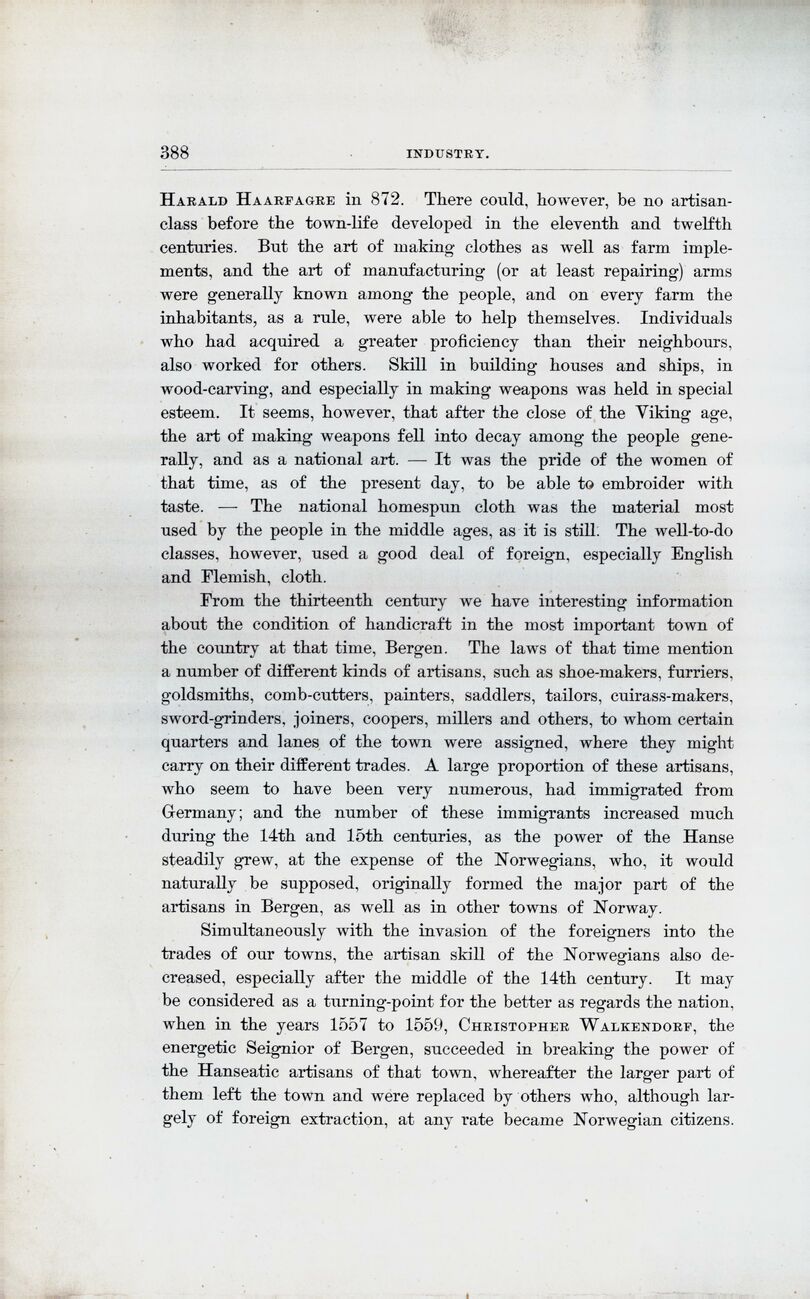
Full resolution (JPEG) - On this page / på denna sida - Industry, by G. Amnéus and A. Th. Klær

<< prev. page << föreg. sida << >> nästa sida >> next page >>
Below is the raw OCR text
from the above scanned image.
Do you see an error? Proofread the page now!
Här nedan syns maskintolkade texten från faksimilbilden ovan.
Ser du något fel? Korrekturläs sidan nu!
This page has been proofread at least once.
(diff)
(history)
Denna sida har korrekturlästs minst en gång.
(skillnad)
(historik)
Harald Haarfagre in 872. There could, however, be no
artisan-class before the town-life developed in the eleventh and twelfth
centuries. But the art of making clothes as well as farm
implements, and the art of manufacturing (or at least repairing) arms
were generally known among the people, and on every farm the
inhabitants, as a rule, were able to help themselves. Individuals
who had acquired a greater proficiency than their neighbours,
also worked for others. Skill in building houses and ships, in
wood-carving, and especially in making weapons was held in special
esteem. It seems, however, that after the close of the Viking age,
the art of making weapons fell into decay among the people
generally. and as a national art. — It was the pride of the women of
that time, as of the present day, to be able to embroider with
taste. — The national homespun cloth was the material most
used by the people in the middle ages, as it is still. The well-to-do
classes, however, used a good deal of foreign, especially English
and Flemish, cloth.
From the thirteenth century we have interesting information
about the condition of handicraft in the most important town of
the country at that time, Bergen. The laws of that time mention
a number of different kinds of artisans, such as shoe-makers, furriers,
goldsmiths, comb-cutters, painters, saddlers, tailors, cuirass-makers,
sword-grinders, joiners, coopers, millers and others, to whom certain
quarters and lanes of the town were assigned, where they might
carry on their different trades. A large proportion of these artisans,
who seem to have been very numerous, had immigrated from
Germany; and the number of these immigrants increased much
during the 14th and 15th centuries, as the power of the Hanse
steadily grew, at the expense of the Norwegians, who, it would
naturally be supposed, originally formed the major part of the
artisans in Bergen, as well as in other towns of Norway.
Simultaneously with the invasion of the foreigners into the
trades of our towns, the artisan skill of the Norwegians also
decreased, especially after the middle of the 14th century. It may
be considered as a turning-point for the better as regards the nation,
when in the years 1557 to 1559, Christopher Walkendorf, the
energetic Seignior of Bergen, succeeded in breaking the power of
the Hanseatic artisans of that town, whereafter the larger part of
them left the town and were replaced by others who, although
largely of foreign extraction, at any rate became Norwegian citizens.
<< prev. page << föreg. sida << >> nästa sida >> next page >>